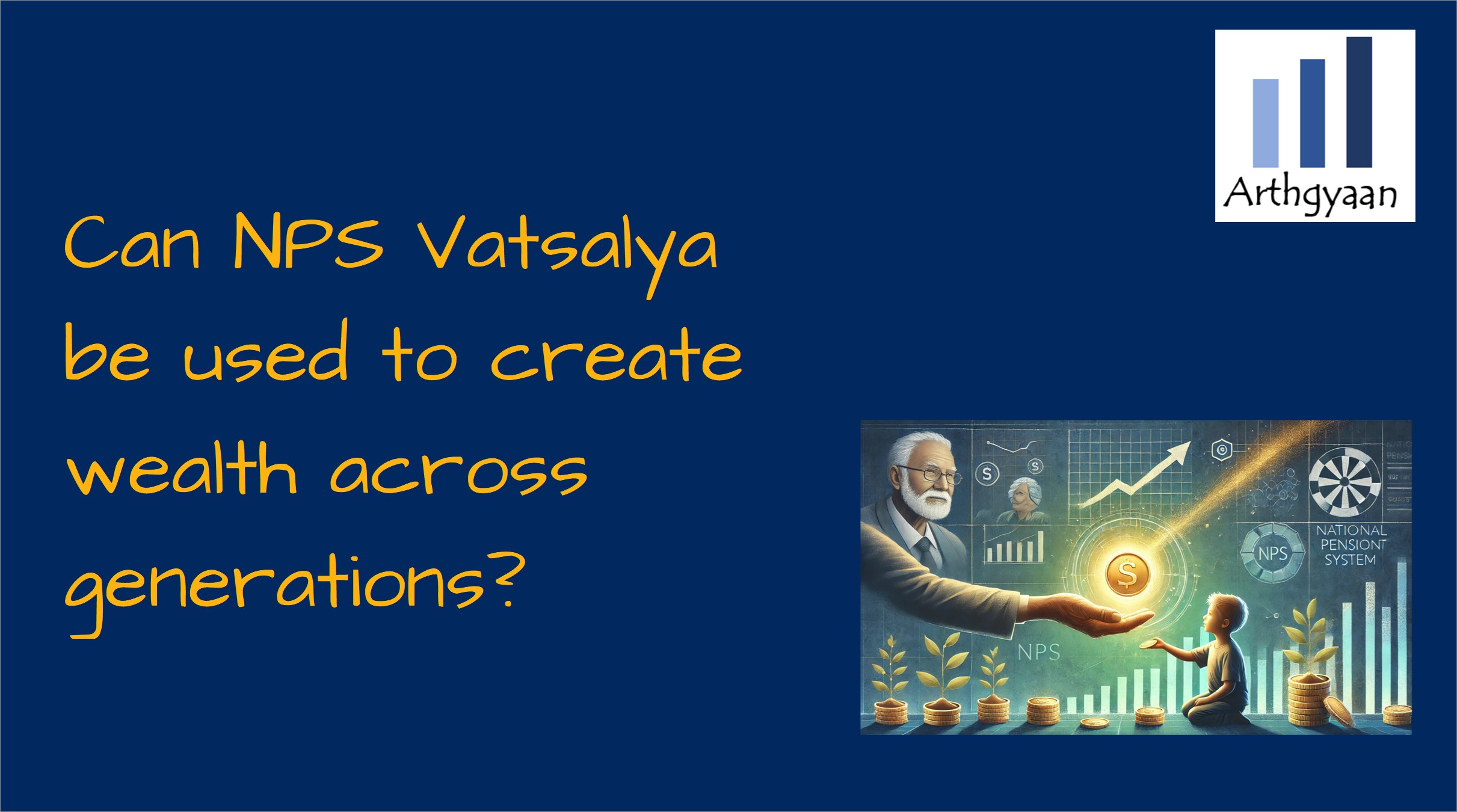Can NPS Vatsalya be used to create wealth across generations?
This article explores using the NPS Vatsalya scheme for grandparents to transfer wealth to their grandchildren by gifting them a large corpus to be used to create a pension income stream.
This article explores using the NPS Vatsalya scheme for grandparents to transfer wealth to their grandchildren by gifting them a large corpus to be used to create a pension income stream.

This article is a part of our detailed article series on the concept of building and transferring generational wealth. Ensure you have read the other parts here:
This article provides an alternative to the usual safe investments that retirees choose vs growing their wealth without taking market risk themselves.
This article provides multiple options for grandparents to transfer family wealth to their grandchildren.
This article discusses an alternative retirement portfolio construction method for generational wealth transfer.
In this article, we will discuss a special case of generational wealth transfer via the NPS Vatsalya scheme. We explore how grandparents can make a large lump-sum investment in the NPS Vatsalya scheme to ensure their grandchildren get a substantial pension amount whenever they want to. We have discussed before why grandparents can invest for their grandchildren: How can grandparents invest for their grandchildren?.
Here is the plan:
Going forward, the grandparents or the parents can invest additionally into NPS Vatsalya.
We are against opening an NPS Vatsalya for children due to better control of the corpus usage and easier management via mutual funds/shares, FD, and real estate. We have discussed these point and features of the NPS Vatsalya scheme here: NPS Vatsalya details revealed: is it good for your children’s future or avoidable?
However, generational wealth transfer via the NPS Vatsalya can be an option in certain cases as we explain below.
This article is a part of our detailed article series on the NPS Vatsalya scheme. Ensure you have read the other parts here:
This article describes the tax benefits announced in Budget 2025 for the NPS Vatsalya Scheme to understand if these benefits make NPS Vatsalya a good scheme for children’s future.
This article discusses the corpus projections shared officially when launching the NPS Vatsalya scheme and how parents should be aware of the danger of ignoring inflation.
This article discusses the NPS Vatsalya scheme that does not really offer any greate benefits over simply investing in mutual funds.
This article discusses the NPS Vatsalya scheme that does not make any sense as a product for anyone even if you plan to invest for your children’s retirement.
There are three conditions to be fulfilled in case of grandparents choosing the NPS Vatsalya for generational wealth transfer:
Here are four scenarios where a lump sum investment can be done:
These are three cases where grandparents should not invest in NPS Vatsalya for their grandchildren:
The amount that goes into NPS Vatsalya scheme account is a one-way journey. You can withdraw up to 1/4th of the invested amount (not the accumulated amount) three times before the child turns eighteen. These withdrawals can happen three years after the account opening.
Once the child is an adult, the account becomes a standard Tier 1 NPS account where:
If there is no need of a pension anytime in the grandchild’s life, then the NPS corpus will be mostly wasted.
Pension plans are currently sold only after age 30. So, NPS can be exited once the grandkid becomes 30+
These are three cases where the NPS corpus can be useful to the grandchild:
It should be kept in mind that pension income is always taxable at slab rates and are either
We will make two assumptions which will make the mathematics easy to understand:
We will now switch completely to real returns so as to avoid discussing fantastically large numbers. For example, ₹50 lakhs after 50 years at 12% is ₹145 crores but is just ₹4.9 crores after adjusting for 7% inflation.
At 12% return and 7% inflation, the real rate of return is:
1.12 / 1.07 - 1 = 4.67% a year
At this rate, the investment becomes
| Years | Corpus |
|---|---|
| 10 | 1.58x |
| 20 | 2.49x |
| 30 | 3.94x |
| 40 | 6.21x |
| 50 | 9.81x |
| 60 | 15.49x |
Under these assumptions, the pension at 5% rate for a ₹50 lakhs investment will be
| Years | Amount | Pension/month |
|---|---|---|
| 10 | ₹79 lakhs | ₹32,893 |
| 20 | ₹125 lakhs | ₹51,933 |
| 30 | ₹197 lakhs | ₹81,995 |
| 40 | ₹311 lakhs | ₹1,29,458 |
| 50 | ₹491 lakhs | ₹2,04,395 |
| 60 | ₹775 lakhs | ₹3,22,711 |
Reading this table, a ₹50 lakhs investment for 30 years grows to ₹1.97 crore which gives a pension (pre-tax) of ₹81,995. All of this is adjusted for inflation for easy comparison.

Published: 18 December 2025
7 MIN READ
1. Email me with any questions.
2. Use our goal-based investing template to prepare a financial plan for yourself.Don't forget to share this article on WhatsApp or Twitter or post this to Facebook.
Discuss this post with us via Facebook or get regular bite-sized updates on Twitter.
More posts...Disclaimer: Content on this site is for educational purpose only and is not financial advice. Nothing on this site should be construed as an offer or recommendation to buy/sell any financial product or service. Please consult a registered investment advisor before making any investments.
This post titled Can NPS Vatsalya be used to create wealth across generations? first appeared on 09 Oct 2024 at https://arthgyaan.com